Ogcocephalidae: BL III A3
Halieutaea fitzsimonsi (Gilchrist and Thompson 1916 )
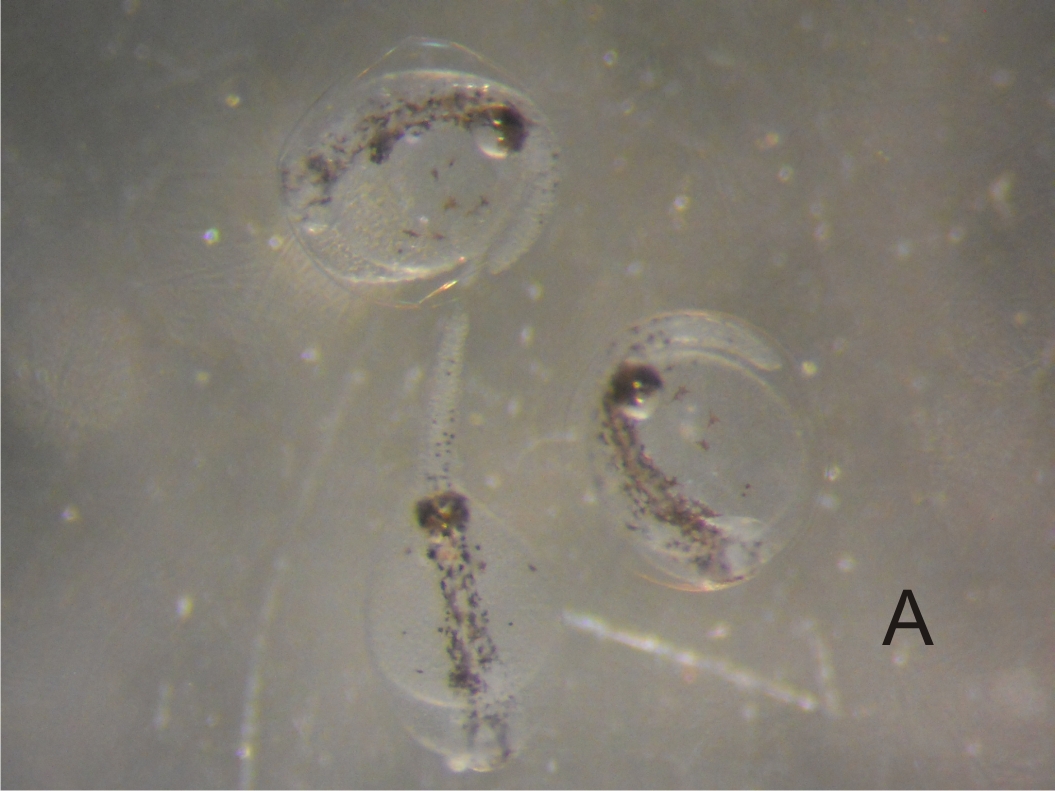
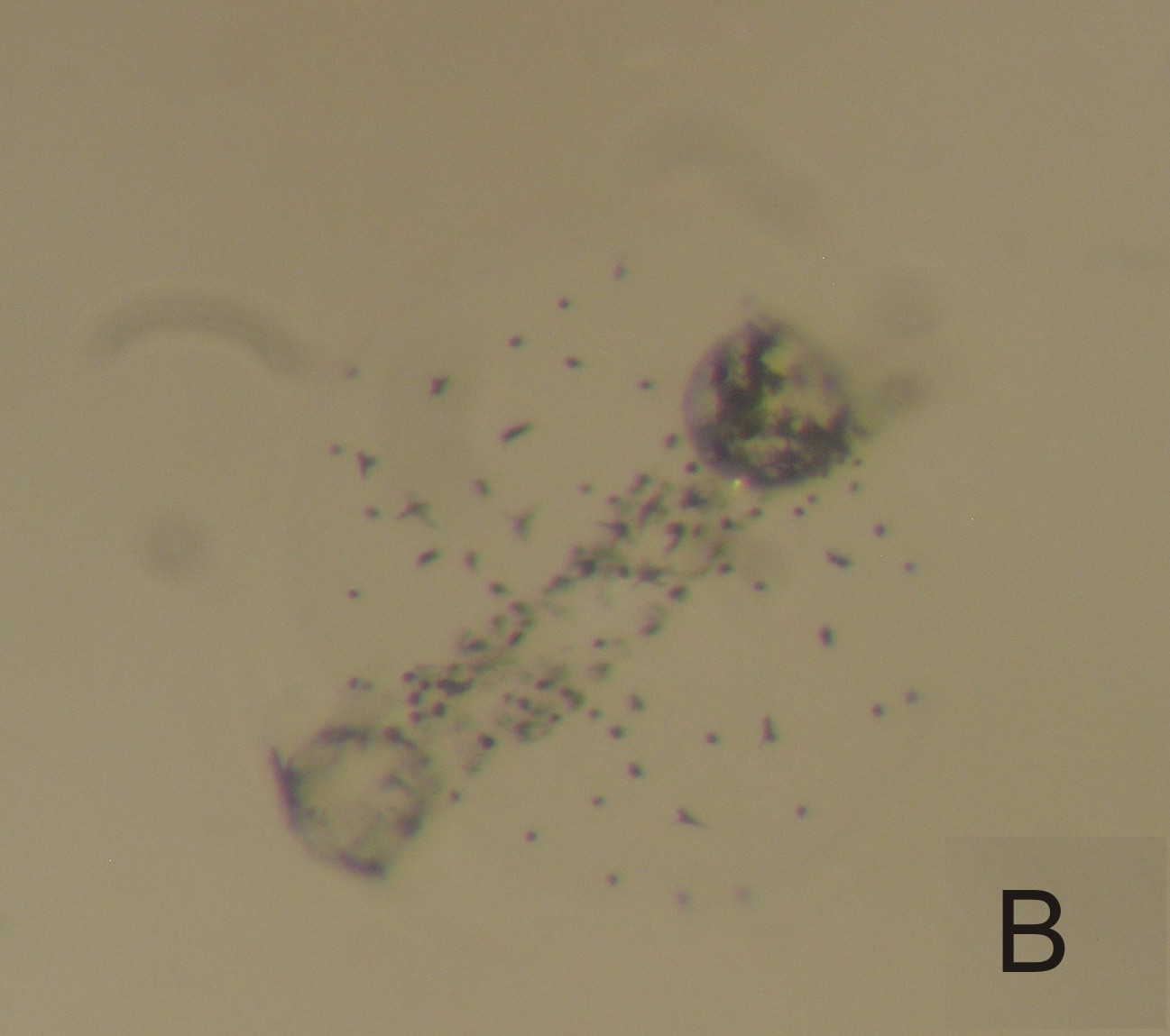
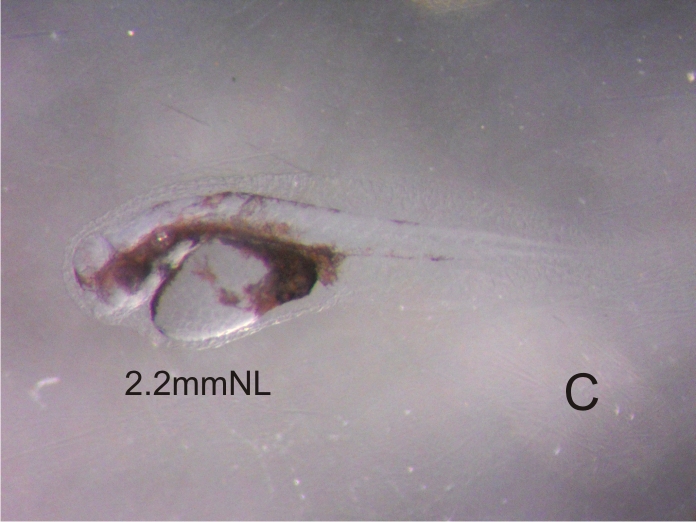
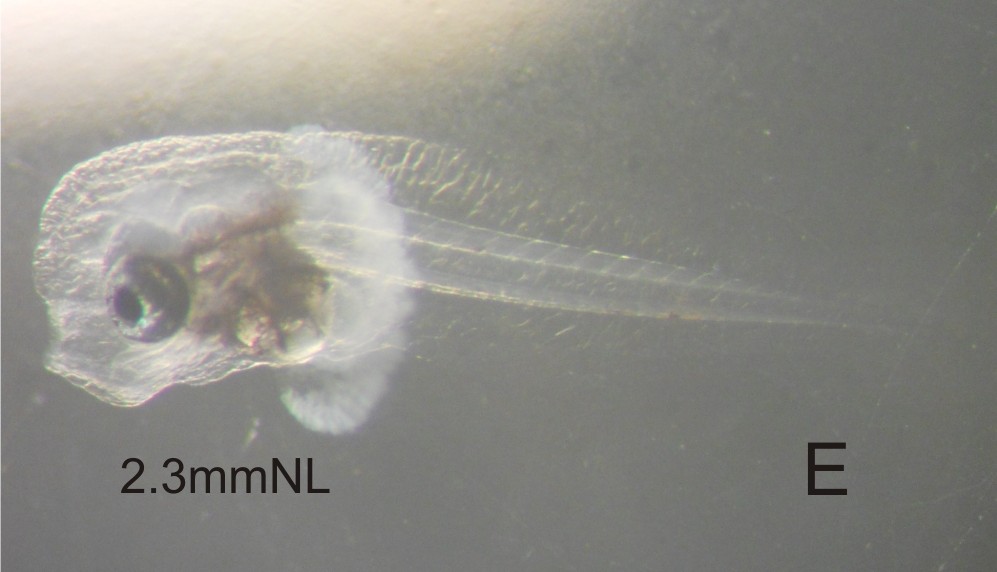
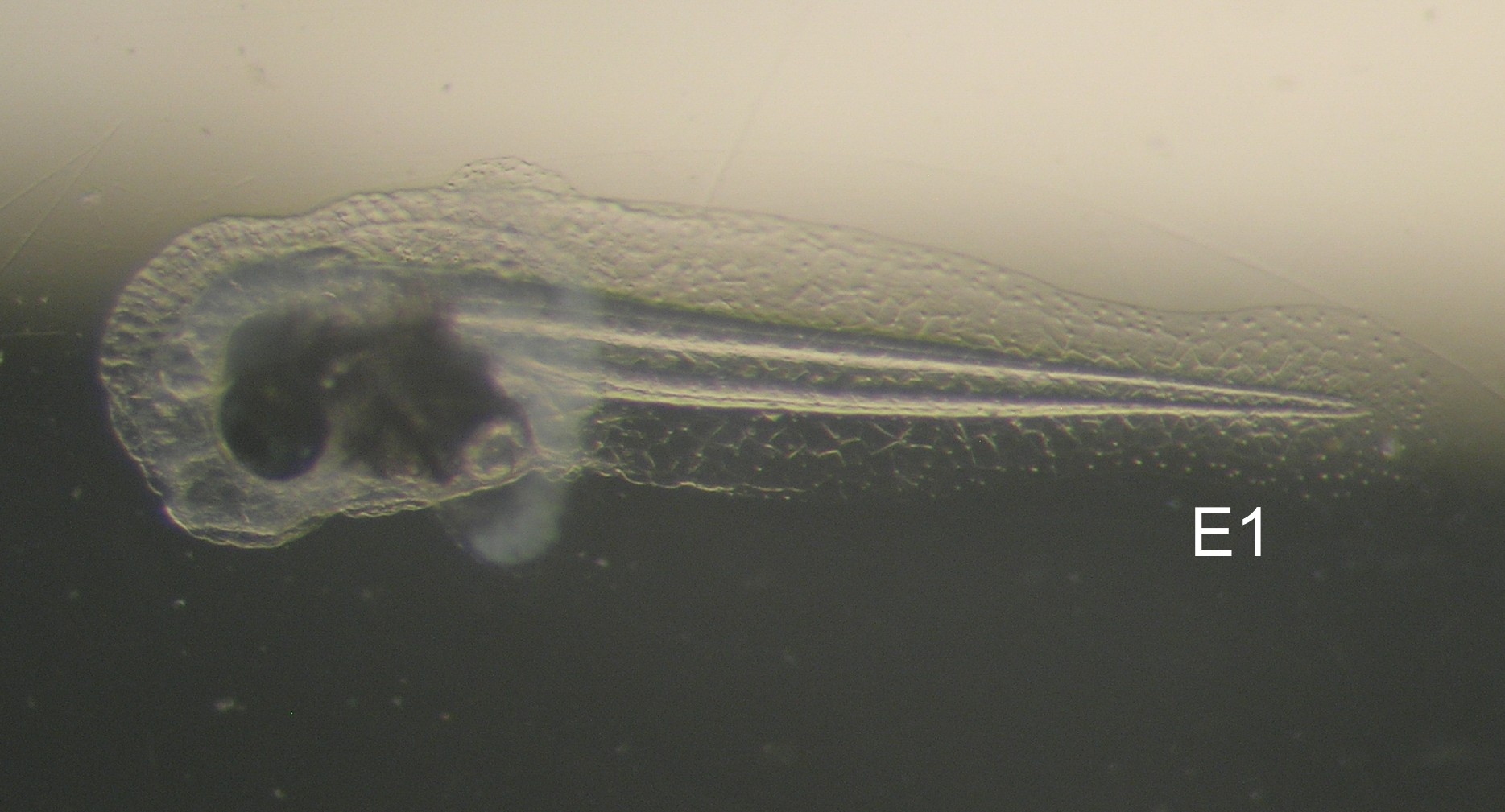
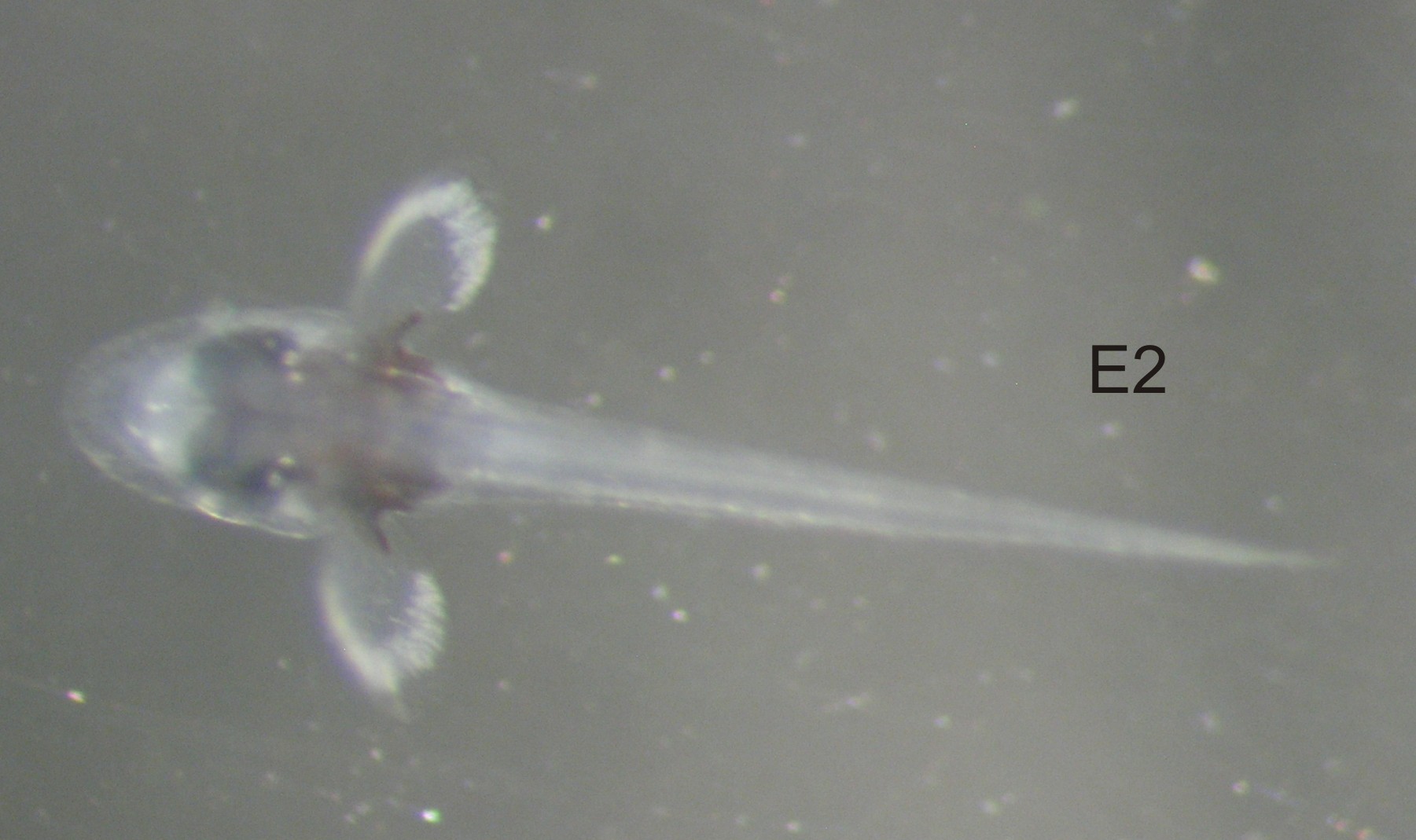
Egg diameter in µm |
Number of oil globules |
Diameter of oil globule in µm |
Yolk texture |
Perivitelline space |
Position of oil globule at hatch |
Gut length at eye- pigment stage |
Myomeres |
840 |
1 |
190 |
clear |
narrow |
stern |
39% of NL |
20 |
Egg: This egg is easily identified when seen in the late stage of Plates A & B, due to the oval shape and mass of black chromatophores on the larva, yolk and oil globule. The oil globule is clear to light amber. The yolk surface is very granular. The egg has not been seen in earlier stages of development, probably due to the deep water habitat of this species, and a short development time for the egg.
Larva: Upon hatching, the larva is characteristically marked with black chromatophores (Plate C). The 4-day larva already shows signs of the developing rough texture to the cuticle, a dark thorax and big white edged pectorals (E). C: 1 day, D: 2 days, E: 4 days.
Seven larvae hatched from this egg, have been barcoded, and match the barcode of 10 adult fish collected locally (BOLD). I have had difficulty distinguishing the species, using Bradbury's ( in Smith& Heemstra 1986) key, so several adults under the name H. coccinea (=spicata) and several under the name fitzsimonsi, have been barcoded, all matching this egg. I believe H. fitzsimonsi is the correct identification, using a more recent key by M Eric Anderson.

This egg has only been seen 7 times, all except one in November and December (blue graph). It was not seen in the DHM samples. The Park Rynie linked samples total only 17 eggs, 14 of which were in the inshore samples. This is a surprisingly low 18% offshore, considering this species is normally associated with deep water, but the result is biased by an inshore sample in March 2003, containing 9 eggs. See Section 7.3 and Table 1 of the Introductory Notes, for more information on the linked samples.